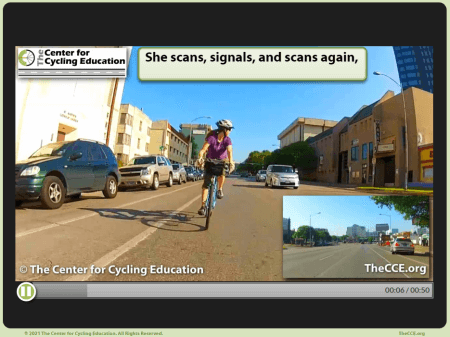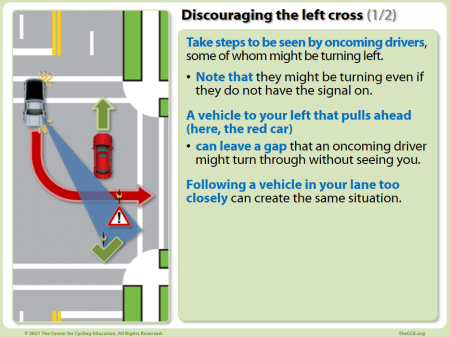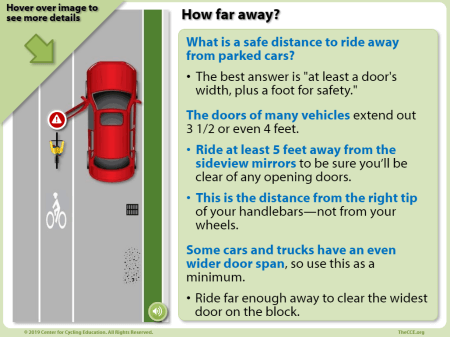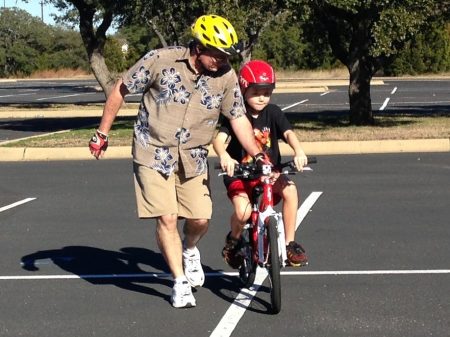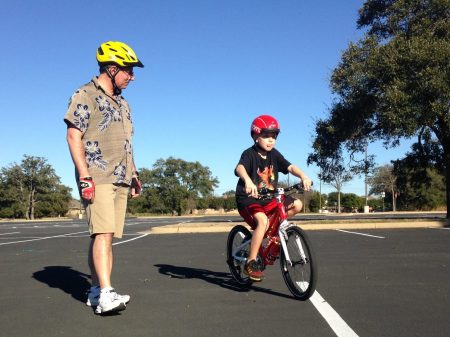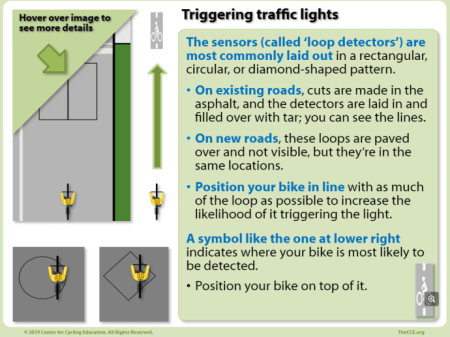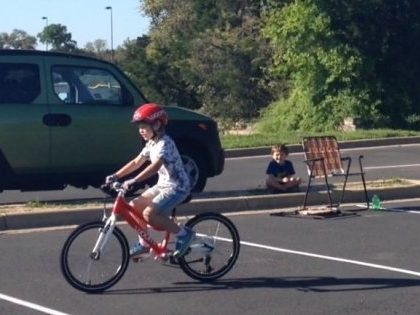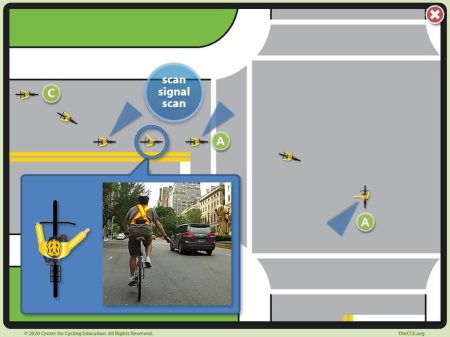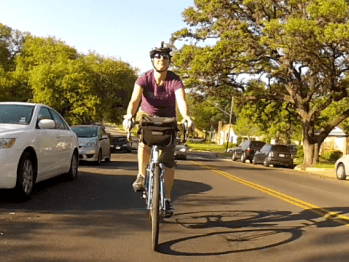Canada » SK – Saskatchewan » Regina » Regina Traffic Bylaw: Cyclists
See below for the municipal bylaw that applies to riding your bike in Regina.
BYLAW NO. 9900 — THE REGINA TRAFFIC BYLAW, 1997
Including Amendments to April 26, 2023
Source:
https://www.regina.ca/bylaws-permits-licences/bylaws/Traffic-Bylaw/
Notice from the City of Regina:
Disclaimer:
This information has been provided solely for research convenience. Official bylaws are available from the Office of the City Clerk and must be consulted for purposes of interpretation and application of the law.
Definitions
PART I
INTERPRETATION
Definitions
1. In this Bylaw:
“alley” means a public highway intended primarily to give vehicles access to the rear or side of real property;
“bicycle” means a vehicle that is propelled by muscular power or combined muscular and electrical-assisted power, fitted with pedals that are continually operable to propel it, weighing no more than 35 kilograms and does not have sufficient electrical power to attain a speed greater than 34 km/h on level ground within a distance of two km from a standing start which a person may ride, regardless of the number of wheels it may have;
“bicycle lane buffer” means that portion of longitudinal division of a public highway which separates bicycles and electric kick scooters from the parking lane or the traffic lane through the use of signage, pavement markings or delineation elements;
“bicycles only lane” means that portion of a longitudinal division of a highway that is designated for bicycles or electric kick scooters only by this bylaw and is indicated through signs and/or pavement markings as being for bicycles only;
“curb” means the actual curb to a street, or where there is no curb, the dividing line between that part of a public highway intended for the use of vehicles and that part of a public highway intended for use by pedestrians;
“driveway” means a private right-of-way, paved or unpaved, that provides access for vehicles and pedestrians from a boulevard, curb, or sidewalk to a lot or a carport, garage, parking pad, loading berth, or structure located on the lot;
“electric kick scooter” has the meaning prescribed in The Limited Speed Motor Vehicle Regulations, 2022, as may be amended from time to time.
“intersection” means that portion of the roadway where two or more public highways intersect;
“motor vehicle” means a vehicle propelled or driven by any means other than by muscular power;
“operator” means any person who drives, operates, or is in charge of a vehicle;
“parking” means the standing of a vehicle, whether occupied or not, on a public highway, otherwise than temporarily for the purpose of and while actually engaged in loading or unloading or in obedience to traffic regulations, signs or signals;
“pedestrian” means any person on foot or confined to a wheelchair, whether powered by human power or by motor;
“pedestrian-assisted activity” includes any human-powered activity such as in-line skating, rollerskating, skate-boarding, snowboarding, skiing and tobogganing, but excludes bicycles;
“pedestrian corridor” means a crosswalk that has been designated as a Pedestrian Corridor that is indicated for pedestrian crossing by overhead pedestrian crossing signs equipped with flashing red signals;
“pedestrian crosswalk” means:
(a) that portion of a public highway designated by signs, signals or pavement markings, or combination thereof, for use by pedestrians to cross a public highway;
(b) where there are no signs or pavement markings, that portion of a public highway within the prolongation of the lateral boundary lines of the adjacent or intersecting sidewalks at the end of a block; or
(c) where there are no signs or pavement markings or sidewalks, that portion of the roadway measured five metres back from the street intersection and parallel across the roadway;
“pedestrian mall” means a street or portion thereof designated for use by pedestrians and which prohibits or restricts vehicle use on all or any part of its width;
“police officer” means a peace officer as defined in The Traffic Safety Act;
“public highway” means a street, alley or other road designed and intended for or used by the general public for the passage of vehicles, but does not include any privately or publicly owned area primarily intended to be used for the parking of vehicles and the necessary passageways on that area;
“sidewalk” means the actual sidewalk where constructed on or adjacent to a part of a public highway or that portion of a public highway intended primarily for use by pedestrians or any structure in a park or other public place designed and intended for use by pedestrians;
“slow moving vehicle” means any slow moving vehicles or equipment, any animal-drawn vehicle or any other machinery designed for use at speeds less than 40 kilometres per hour or which normally travels or is used at speeds of less than 40 kilometres per hour;
“stop” means:
(a) when required, a complete cessation from movement; and
(b) when prohibited, any stopping, even momentarily, of a vehicle, whether occupied or not, except when necessary to avoid conflict with other traffic or in compliance with the directions of a police officer or a traffic control signal;
“street” means that portion of a public highway lying between curbs where constructed and intended primarily for use by vehicles, or where no curb exists, that portion of a public highway intended for use by vehicles;
“traffic” means the movement of pedestrians, vehicles or livestock on any public highways in the City;
“traffic control device” means any sign, signal, parking meter, pavement marking, barricade or other device erected, placed or marked on, at or above a public highway pursuant to The Traffic Safety Act and Uniform Traffic Control Devices for Canada for the purposes of regulating, warning or guiding the public;
“traffic lane” means a longitudinal division of a highway of sufficient width to accommodate the
passage of a single line of vehicles;
“traffic marker” means an object intended to be used for the purpose of channelling traffic on a street;
“traffic signal light” means a lighted device whether manually, electrically or mechanically operated, for the purpose for directing, warning or regulating traffic;
“two-way left turn lane” means the paved area in the highway median that extends along a highway section appropriately marked with signs and pavement markings, out of the through traffic stream, for vehicles travelling in either direction to make left turns into intersections and driveways;
“vehicle” means a device in, on or by which a person or thing is or may be transported or drawn on a highway and includes special mobile machines and agricultural implements, and, for the purpose of parking and stopping restrictions, includes any portion of a vehicle;
Traffic Signs & Traffic Routes
PART II
TRAFFIC SIGNS & TRAFFIC ROUTES
Bicycle-Only Lanes
9.1 (1) Bicycles only lanes are established on the following streets, and the portions of the street that are designated for bicycles and electric kick scooters only are indicated through signs and/or pavement markings as being for bicycles and electric kick scooters only:
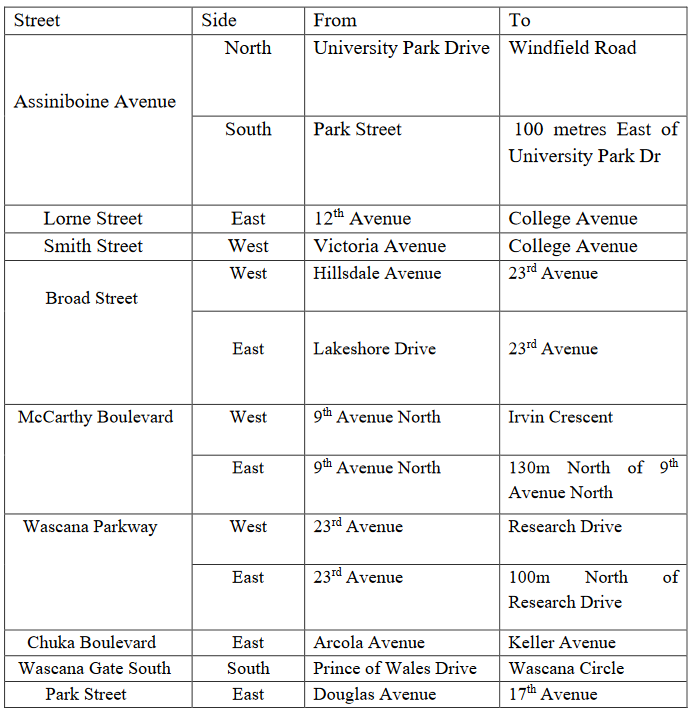
(2) Except for City maintenance or construction vehicles or vehicles otherwise engaged by the City for a municipal purpose, no person shall operate or stop a vehicle, other than a bicycle, electric kick scooter, or slow moving maintenance vehicle, in a bicycle only lane or bicycle lane buffer, except for the purpose of:
(a) accessing a parking spac o or from a driveway or access, provided that the operator yields to any bicycle or electric kick scooter, and that the operator minimizes the distance travelled in the bicycle-only lane; or
(c) accessing a bus stop in the case of a transit vehicle, provided that the operator yields to any bicycle or electric kick scooter, and that the operator minimizes the distance travelled in the bicycle-only lane.
(3) No person shall drive a vehicle, other than a bicycle, electric kick scooter, or slow-
moving maintenance vehicle, across a street intersection while travelling in a bicycle only lane
(4) No person shall drive a vehicle to drive in a manner that is unreasonable and imprudent when approaching any special hazard that exists with respect to cyclists, scooterists, or other active transportation modes.
(5) No person shall drive a vehicle by following a cyclist or scooterist more closely than is reasonable and prudent, without due regard for the speed of the bicycle.
Moving Violations
PART IIi
MOVING VIOLATIONS
Overtaking a Vehicle
11. (1) No person operating a vehicle in the curb lane of a street shall overtake a vehicle travelling in the same direction in the adjacent traffic lanes during anytime when parking is permitted in the curb lane, except:
(a) to make a right turn on to or off of the street block in which the vehicle entered the curb lane; or
(b) to park on the street block.
(2) Subsection (1) shall not apply:
(a) to bicycles, electric kick scooter, and emergency vehicles or buses operated by the Transit Department of the City; or
(b) where traffic is obstructed in the adjacent traffic lane by the breakdown of a vehicle or a traffic accident.
Entering Intersections
12. (1) No person operating a vehicle shall enter a street intersection unless:
(a) there is sufficient space on the other side of the intersection to accommodate the vehicle without obstructing the passage of cross traffic; or
(b) the vehicle is making a lawful turn at an intersection.
(2) No person operating a vehicle in the curb lane shall proceed through an intersection during anytime when parking is permitted in the curb lane; except:
(a) to proceed around a left turning vehicle located in the adjacent traffic lane; or
(b) to cross a street intersection where the projection of the curb lane continues across the intersection into a traffic lane adjacent to a curb lane.
(3) Subsection (1) and (2) shall not apply to:
(a) bicycles;
(a.1) electric kick scooters;
(b) emergency vehicles;
(c) buses operated by the Transit Department of the City;
(d) traffic where obstructed in the adjacent traffic lane by the breakdown of a vehicle or a traffic accident.
Restricted Vehicles
RESTRICTED VEHICLES
Pedestrian Malls
78. (1) No person shall operate a vehicle, other than an electric kick scooter or a service
vehicle, on a pedestrian mall.
(2) No person shall operate a service vehicle on a pedestrian mall for the purpose of a delivery or pick-up between the hours of 10:30 am and 6:00 pm.
(3) No person shall park a service vehicle on a pedestrian mall for the purpose of making a delivery or pick-up for a period of more than 30 minutes between the hours of 5:00 am and 10:30 am.
(4) With respect to pedestrian malls, a Temporary Street Use Permit may be issued for a pedestrian mall for the following purposes:
(a) for deliveries and pick-ups of goods or packages;
(b) for any construction or building maintenance vehicles that require access to the pedestrian mall;
(c) for any special event or entertainment function that requires use of all or any portion of the pedestrian mall;
(d) subject to the approval of the Chief of Police, for any parade, procession, demonstration, rally or similar assemblage of persons that requires use of all or any portion of the pedestrian mall.
Bicyclists
PART VIII
CYCLISTS AND SCOOTERISTS
Bicycle License
80. Repealed. (#2015-23, s. 6, 2015)
Rules of the Road Prevail
81. Every cyclist shall operate a bicycle in accordance with the applicable rules of the road as set out in The Traffic Safety Act.
Restrictions on Bicyclists
82.
(1) No person shall operate a bicycle with a wheel diameter of 40 centimetres or more on any sidewalk or boulevard, except where permitted by an appropriate sign.
(2) No person shall operate a bicycle while carrying more persons at one time than the number for which it is designed and equipped.
(3) No person shall operate a bicycle in a reckless or negligent manner.
(4) No person shall operate a bicycle while riding more than two abreast of another cyclist except for the purpose of passing on the left side.
(5) No person shall operate a bicycle while carrying a load in excess of that for which the bicycle is designed and equipped.
(6) No person shall operate a bicycle without having at least one hand on the handle bars.
(7) No person shall operate a bicycle between one-half hour before sunset and one-half hour after sunrise, unless the bicycle is equipped with:
(a) a lighted headlamp which is visible from the front of the bicycle; and
(b) a red tail light that is visible from the rear of the bicycle.
(8) No person shall operate a bicycle on a pedestrian mall.
Bicycle Parking
83.
(1) No person shall chain or otherwise secure a bicycle to a pole, tree or other structure on any public highway, sidewalk, pedestrian mall or public place, other than;
(a) a bicycle stand provided for that purpose; or
(b) a pole which has been designated by the Director as one that may be utilized
for bicycle parking.
(2) No person shall leave a bicycle in a reclining position on any public highway, pedestrian mall, sidewalk or public place.
Impoundment
84. Repealed. (#2015-23, s. 7, 2015)


